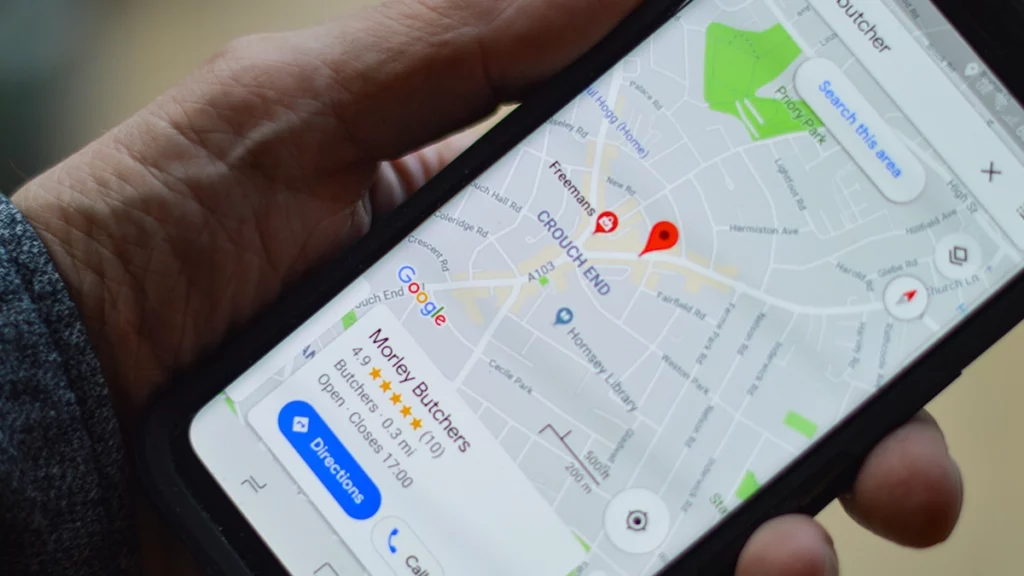Writing a blog for SEO isn’t just about putting words on a page. It’s about creating useful, well-structured content that helps your audience and signals to Google that your website deserves to rank. Spend just 7 minutes here, and save hours of guesswork in your SEO efforts later.
For small businesses and startups, blogging can be one of the most effective (and affordable) ways to grow organic traffic, build brand authority, and attract potential customers. But if you’re not sure where to start, the process can feel overwhelming.
In this guide, we’ll break down the complete process for writing a blog for SEO – from research and planning to writing, optimising, and publishing – so you can confidently create content that gets noticed.
Why SEO Blogging Matters for Small Businesses
Search engines love fresh, relevant, and helpful content. Blogging gives your website a steady stream of exactly that.
When done properly, writing a blog for SEO helps your business:
- Improve visibility on Google and other search engines.
- Attract qualified leads who are actively searching for your services or expertise.
- Build trust and authority by showing you know your stuff.
- Encourage engagement through comments, shares, and returning visitors.
Unlike paid ads that stop working when your budget runs out, SEO-optimised blog posts continue to attract traffic long after you publish them.
read more
How Long Does SEO Take to Work?
Step 1: Define Your Audience and Goals
Before you start writing, think about who you’re writing for and what you want to achieve.
Ask yourself:
- Who is my target audience?
- What problems do they have that I can solve?
- What topics would they search for online?
- What do I want readers to do after reading – visit my website, contact me, or sign up for something?
If your goal is to attract potential customers, focus your content around the types of questions or topics they’re already searching for. For example, if you run a digital marketing agency, your audience might look for terms like “how to improve website SEO” or “best social media tips for small businesses”.
Defining your audience helps you choose the right keywords, tone, and structure for your post – all key ingredients in writing a blog for SEO.
Step 2: Do Keyword Research
Keyword research is the foundation of any SEO blog. It helps you identify what people are searching for and how competitive those searches are.
You don’t need fancy tools to get started. Google’s Autocomplete, People Also Ask, and Related Searches sections can help you find popular search terms. However, using free or affordable tools like Ubersuggest, Google Keyword Planner, or AnswerThePublic can provide more data.
Look for:
- Primary keywords: the main focus of your post (e.g. writing a blog for SEO).
- Secondary keywords: related phrases that support your topic (e.g. SEO blogging tips, optimising blog posts for search engines).
- Long-tail keywords: more specific, less competitive searches (e.g. how to write a blog for SEO step by step).
The goal is to find a balance between search volume (how many people are searching) and competition (how hard it is to rank).
Once you’ve chosen your target keyword, make sure it appears naturally throughout your post – especially in the title, headings, and early paragraphs.
Step 3: Plan Your Blog Structure
A well-structured blog post is easier to read and helps search engines understand what your content is about.
Start with a simple outline that includes:
- Introduction – Hook the reader and explain what they’ll learn.
- Main Sections – Break down the topic into logical steps or categories.
- Conclusion – Summarise the key points and include a clear call-to-action (CTA).
Use H2 and H3 headings to separate sections and include relevant keywords where it feels natural. This not only improves readability but also helps Google scan your content more effectively.
For example, in this post, you’ll notice headings like “Step 3: Plan Your Blog Structure” and “Step 5: Optimise Your Content for SEO” – both are descriptive and keyword-friendly.
Step 4: Write Engaging, Helpful Content
Now that you’ve done your research and outlined your structure, it’s time to start writing.
The key to writing a blog for SEO is to focus on the reader first and search engines second. Google’s algorithm is smart enough to tell whether your content is genuinely useful – so your main goal should always be to help, not just rank.
Here are some tips for writing effective blog content:
- Keep sentences short and clear. Avoid long, complicated paragraphs.
- Use transition words (like “however”, “therefore”, “meanwhile”) to make your writing flow naturally.
- Answer real questions. Write as if you’re explaining something to a customer or client.
- Add examples and insights. Share your experience or real-life stories to make the post more relatable.
- Avoid keyword stuffing. Use your target keyword naturally – aim for around 1–2% density.
Remember, SEO-friendly doesn’t mean robotic. The best-performing blogs sound human and authentic, not stuffed with jargon.
Step 5: Optimise Your Content for SEO
Once your first draft is done, it’s time to fine-tune it for search engines. This step makes a huge difference to how well your post performs.
Here’s what to check:
1. Title Tag and Meta Description
Your title tag should include your main keyword and clearly describe the topic.
Example: The Process for Writing a Blog for SEO: A Simple Guide for Small Businesses.
Your meta description (the short snippet that appears under your page title in search results) should be around 150–160 characters. Use it to summarise the post and encourage clicks.
Example: Learn the complete process for writing a blog for SEO. A simple step-by-step guide for small businesses and startups.
2. Headings
Use clear, keyword-rich headings (H2s and H3s). This helps both readers and Google understand your structure.
3. Images
Add at least one relevant image or graphic. Compress it for web use and include your keyword in the alt text (e.g. “diagram showing the process for writing a blog for SEO”).
4. Internal and External Links
Link to other relevant posts on your website (internal links) and reputable external sources where appropriate. Internal links help keep visitors on your site longer, while external links add credibility.
5. Readability and Formatting
Break up text with bullet points, lists, and short paragraphs. The easier your content is to read, the more likely visitors will stay and engage.
6. URL Structure
Keep your URL short and descriptive, including your main keyword.
Example: https://yourwebsite.co.uk/blog/writing-a-blog-for-seo/
Need an SEO audit?
Get in touch
Step 6: Add a Strong Call-to-Action (CTA)

Every good blog post should guide readers towards the next step. Whether it’s joining your mailing list, downloading a resource, or contacting you for a service, a clear CTA encourages action.
Here are a few examples:
- “Need help with your SEO strategy? Get in touch for a free consultation.”
- “Download our free checklist for writing a blog for SEO.”
- “Read more tips on growing your small business online.”
Place your CTA at the end of the post and, if relevant, repeat it once midway through. Subtle reminders work better than aggressive sales pitches.
Step 7: Review and Edit Your Blog
Before you hit publish, review your post carefully. Typos and poor grammar can make your business look unprofessional – and Google also prefers clean, well-written content.
Here’s a quick editing checklist:
- Proofread for spelling and grammar errors.
- Make sure headings are consistent and logical.
- Check links are working correctly.
- Ensure keyword usage feels natural.
- Double-check that your meta description, URL, and image alt text are complete.
You can also use free tools like Grammarly, Hemingway, or Yoast SEO (if you’re on WordPress) to help polish your content and check your SEO score.
Step 8: Publish and Promote
Publishing your blog is only half the job – promoting it is what gets eyes on your content.
After hitting publish:
- Share your post across your social media channels (LinkedIn, Facebook, Instagram, etc.).
- Send it out via your email newsletter.
- Link to it from other pages on your website.
- Consider sharing it in relevant online communities or forums.
The more traffic and engagement your post receives early on, the more likely Google is to recognise it as valuable content.
Step 9: Monitor Your Performance
SEO blogging isn’t a one-time activity – it’s an ongoing process. Once your post is live, keep an eye on how it performs.
Use Google Analytics and Google Search Console to track:
- Page views and average time on page.
- Which keywords are driving traffic.
- How readers are finding your post.
- Whether visitors are taking action (e.g. clicking links or contacting you).
If you notice that a post is performing well, consider creating more content around similar topics. If it’s underperforming, review the keyword targeting, title, or internal links to see if improvements can be made.
read more
Is SEO Dead? An In-Depth Analysis
Step 10: Refresh and Reuse Your Content
One of the best-kept secrets in SEO blogging is content refreshes.
Search engines value up-to-date content, so review your posts every few months and update them with new stats, examples, or insights. You can also repurpose a blog post into other formats like:
- Short videos or reels.
- Social media carousels.
- Email newsletters.
- Downloadable guides or infographics.
This helps you get more mileage out of every piece of content and keeps your website active.
Common Mistakes to Avoid When Writing a Blog for SEO
Even with the best intentions, many small businesses fall into a few common traps. Here’s what to avoid:
- Writing for search engines only. If your content feels robotic, readers won’t stay long.
- Ignoring keyword research. Guessing what people search for rarely works.
- Skipping structure. Walls of text are hard to read and bad for SEO.
- Not promoting posts. Great content won’t perform if no one sees it.
- Giving up too soon. SEO takes time – consistency is key.
SEO Blog Post Template checklist
- Keyword research
- Create blog outline
- Write post with keyword placement
- Optimise headings, links & images
- Write meta title & description
- Add call-to-action
- Proofread & publish
- Promote on social media
Final Thoughts
Writing a blog for SEO doesn’t have to be complicated – it just needs structure, consistency, and a focus on your reader.
By following the steps above, you’ll not only improve your visibility on search engines but also build trust with potential customers who find you online.
If you’re short on time or unsure where to start, 404 Marketing can help. We create SEO-optimised blog content tailored to your audience, so your business can grow organically – without the guesswork.
👉 Get in touch today to find out how we can help you write blogs that actually rank.


